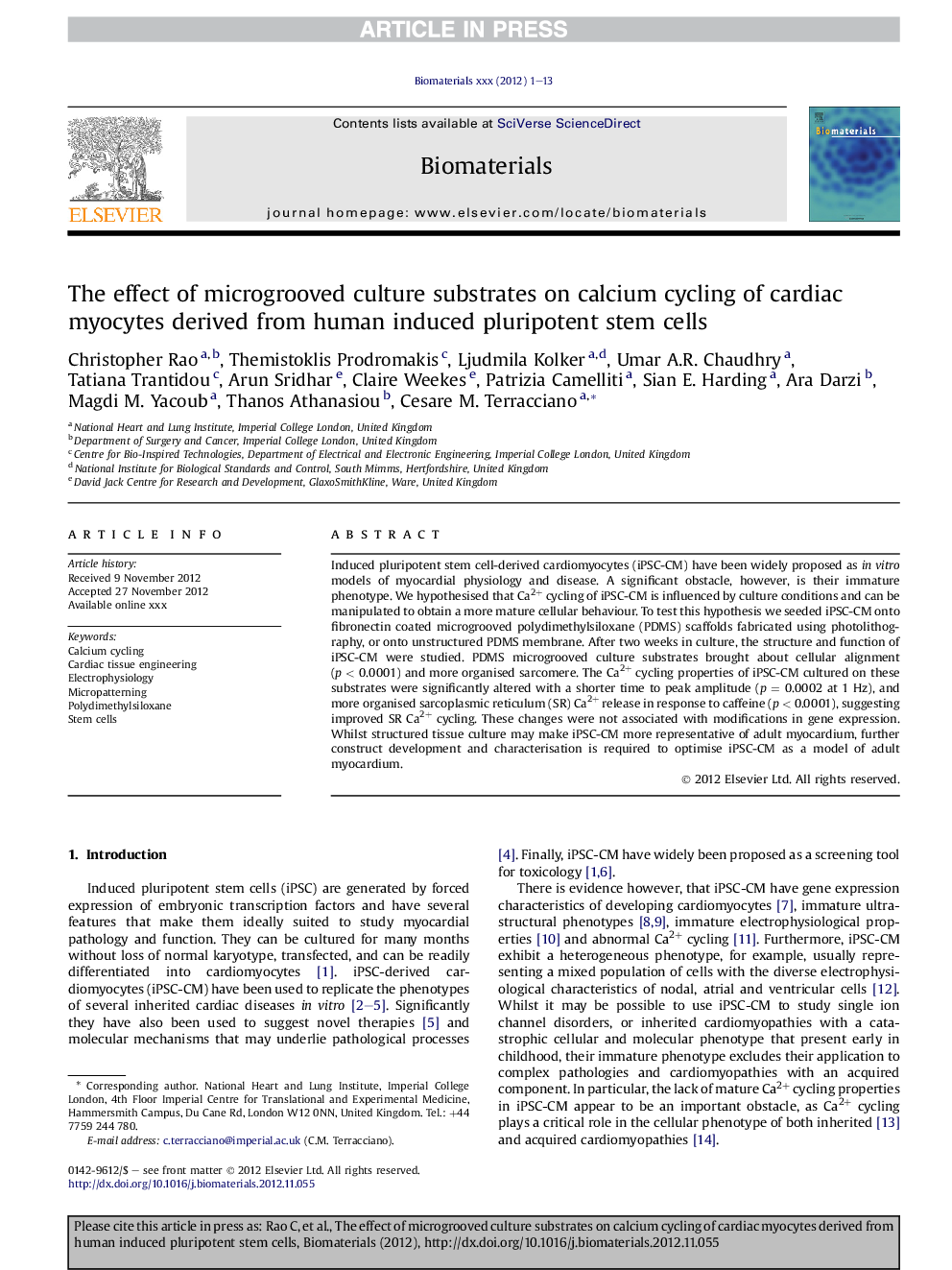| Article ID | Journal | Published Year | Pages | File Type |
|---|---|---|---|---|
| 10228419 | Biomaterials | 2013 | 13 Pages |
Abstract
Induced pluripotent stem cell-derived cardiomyocytes (iPSC-CM) have been widely proposed as in vitro models of myocardial physiology and disease. A significant obstacle, however, is their immature phenotype. We hypothesised that Ca2+ cycling of iPSC-CM is influenced by culture conditions and can be manipulated to obtain a more mature cellular behaviour. To test this hypothesis we seeded iPSC-CM onto fibronectin coated microgrooved polydimethylsiloxane (PDMS) scaffolds fabricated using photolithography, or onto unstructured PDMS membrane. After two weeks in culture, the structure and function of iPSC-CM were studied. PDMS microgrooved culture substrates brought about cellular alignment (p < 0.0001) and more organised sarcomere. The Ca2+ cycling properties of iPSC-CM cultured on these substrates were significantly altered with a shorter time to peak amplitude (p = 0.0002 at 1 Hz), and more organised sarcoplasmic reticulum (SR) Ca2+ release in response to caffeine (p < 0.0001), suggesting improved SR Ca2+ cycling. These changes were not associated with modifications in gene expression. Whilst structured tissue culture may make iPSC-CM more representative of adult myocardium, further construct development and characterisation is required to optimise iPSC-CM as a model of adult myocardium.
Keywords
Related Topics
Physical Sciences and Engineering
Chemical Engineering
Bioengineering
Authors
Christopher Rao, Themistoklis Prodromakis, Ljudmila Kolker, Umar A.R. Chaudhry, Tatiana Trantidou, Arun Sridhar, Claire Weekes, Patrizia Camelliti, Sian E. Harding, Ara Darzi, Magdi H. Yacoub, Thanos Athanasiou, Cesare M. Terracciano,
